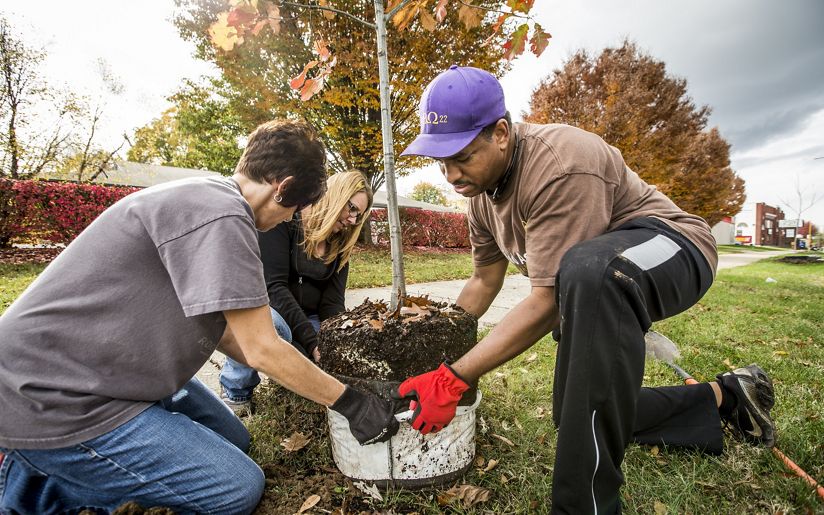- About
- Topics
- Picks
- Audio
- Story
- In-Depth
- Opinion
- News
- Donate
- Signup for our newsletterOur Editors' Best Picks.Send
Read, Debate: Engage.
| August 28, 2019 | |
|---|---|
| topic: | Radioactive Pollution |
| tags: | #Croatia, #Bosnia, #radioactive waste, #nuclear power plant |
| located: | Bosnia and Herzegovina, Croatia |
| by: | Katarina Panić |
The nuclear power plant in Krsko was built in 1983 as a joint venture between Slovenia and Croatia, when both republics were part of Yugoslavia. It provides the electricity for both countries and its waste has been stored in the plant itself ever since, although it was initially applied as a temporary solution. The issue was reopened in 2013 after Croatia joined the EU, which obliged the new member country to take over half of the low and mid-level radioactive waste from Krsko.
In 2015, the media reported that Trgovska Gora was one of four possible locations for the storage site. Dozens of protests in both countries have been launched from time to time as the issue was being hashed out. The last one took place last month, when a group of activists gathered in Sarajevo in front of the Croatian embassy, claiming over 300,000 citizens of Bosnia and Herzegovina may be endangered by the possible waste storage construction.
Maida Sabeta, an environmentalist working with Climate Save Bosnia, stated that not enough work had been done to assess whether the location was safe. More than 16,000 Croatian citizens signed the petition against the project, and more than 30 of Bosnia’s civil society organizations signed the letter to express the concerns regarding the project, which was handed to the Croatian embassy on the day of protests.
“No environmental impact assessment has been carried out in a cross-border context, and no consideration had been given to what kind of danger there may be. Experts from Bosnia, but also from Croatia, have concluded that this site … poses a great danger to Bosnian citizens,” she said.
The Croatian Ministry of Environment and Energy announced that the next meeting between Croatia and Slovenia on the issue is going to take place in September, that the final decision on the location should be made in October, adding that whatever decision was reached, “somebody will always be dissatisfied."
Slovenia’s Ministry for the Environment and Spatial Planning told the media that they already have a location for storage at Vrbina, about 500 meters from the Krsko power plant, adding that Croatia “is supposed to take half of the waste from the Krsko NPP 2023, unless we find a mutual agreement about a single solution."
Nina Domazet, editor of the Croatian website “energetika-net”, told the Balkan Investigative Reporting Network that Croatia should store the waste at a location that is geologically the most suitable and abides by strict criteria, adding that the solution is financially necessary as Croatia will otherwise have to pay Slovenia much more for the landfill at Vrbina.
“There are few such locations in Croatia. As a result of earlier analysis, three were found, but political lobbying meant all of them were dropped except at Trgovska Gora, which did not have a strong lobby,” Domazet said.
As far as lobbying, most of the previously considered location beside Trgovska Gora was proclaimed by lobbyists as a protected zone. The same is announced these days by Bosnia and Herzegovina for river Una, one of the most beautiful and cleanest of Bosnia’s rivers which constitutes the natural border between two states and is less than a mile from the possible nuclear waste disposal site. Establishing this tourist attraction as a Nature Park, Bosnia’s authorities believe they improve their negotiating position with neighbors.
Although Bosnia’s officials repeatedly claim there are several international regulations and sufficient legal instruments that provide protection, the extensive exchange of letters, emails, and other forms of communication among different Bosnian institutions, as well as between Bosnia and Croatia, indicate quite the opposite.
Croatia stressed that it would respect the Convention on Environmental Impact Assessment in a Transboundary Context informally called the Espoo Treaty, but then emphasized that Bosnia itself had still not ratified the Protocol on Strategic Environmental Assessment /SEA Protocol/ to this convention, which obliges all signatory states to notify and consult each other on all major projects under the consideration that are likely to have a significant adverse environmental impact across borders.
To make the situation even worse for Bosnia, the Espoo Treaty only obliges countries to notify and consult each other on such matters, and the treaty itself cannot prevent Croatian government's actions. This was exactly the conclusion of the message which Bosnia’s Ministry of Foreign Trade and Economic Relations sent to Bosnia’s State Regulatory Agency for Radiation and Nuclear Safety.
“We find it important to stress that through the regulations of Espoo Convention the concerned party is not given a possibility to directly stop the potential intention of the other party in implementing project activity that would potentially have across-boundary affect,” Bosnia's Foreign Ministry stated in the message.
The last protests in Croatia earlier this year stressed the importance of facilitating organic agriculture for people who live near Trgovska Gora, rejecting the announcements of those around the location who argue that enormous EU funds will be funneled into the area if the disposal site were to be constructed.
“Who is going to buy organic products, honey, vegetables, fruits, lavender, all grown next to radioactive waste? All of our pristine nature, rich flora, and fauna, agricultural wealth and great potential for the development of organic production, including the development of tourism would have been switched to completely opposite perception. It would be disastrous and catastrophic”, the Croatian national assembly MP Darinko Dumbović told the media.
By copying the embed code below, you agree to adhere to our republishing guidelines.

